Bakers love cinnamon as a versatile spice used in baking to provide irresistible flavor. Let’s learn about the different types of cinnamon and which to use in your baking.

Table of Contents
Baking with Cinnamon
Cinnamon, with its subtle yet unmistakable aroma, is a beloved companion in the world of baking. It brings a touch of warmth and familiarity to our recipes, making every bite deliciously comforting.
Its ability to enhance the sweetness of sugar and accentuate the flavors of other ingredients is a testament to its versatility. Whether it’s a simple coffee cake or a classic apple pie, cinnamon elevates our baked goods to a level of timeless deliciousness.
As someone who spends a lot of time baking, I know that choosing the right cinnamon can make all the difference in our creations. I’m a big fan of all things cinnamon, and I’ve learned over the years that many bakers have their favorite kinds and brands. So while I’ll be suggesting when to use each kind of cinnamon, keep in mind that taste is always subjective!
Let’s take a look at the sweet and spicy realm of this beloved spice, as we discover when and how to use each type to elevate our baking to new heights!
What is Cinnamon?
Cinnamon is a fragrant and versatile spice derived from the inner bark of several species of trees in the Cinnamomum genus. Its warm, sweet, and slightly spicy flavor, as well as its delightful aroma, make it a beloved spice renowned around the world.
Cinnamon has a rich history dating back thousands of years. Its distinct taste adds depth and character to a wide range of dishes, particularly in baking. Whether in the form of ground powder or as cinnamon sticks, cinnamon has firmly established itself as an essential spice in kitchens around the world, lending its unique charm to an array of recipes and culinary traditions.
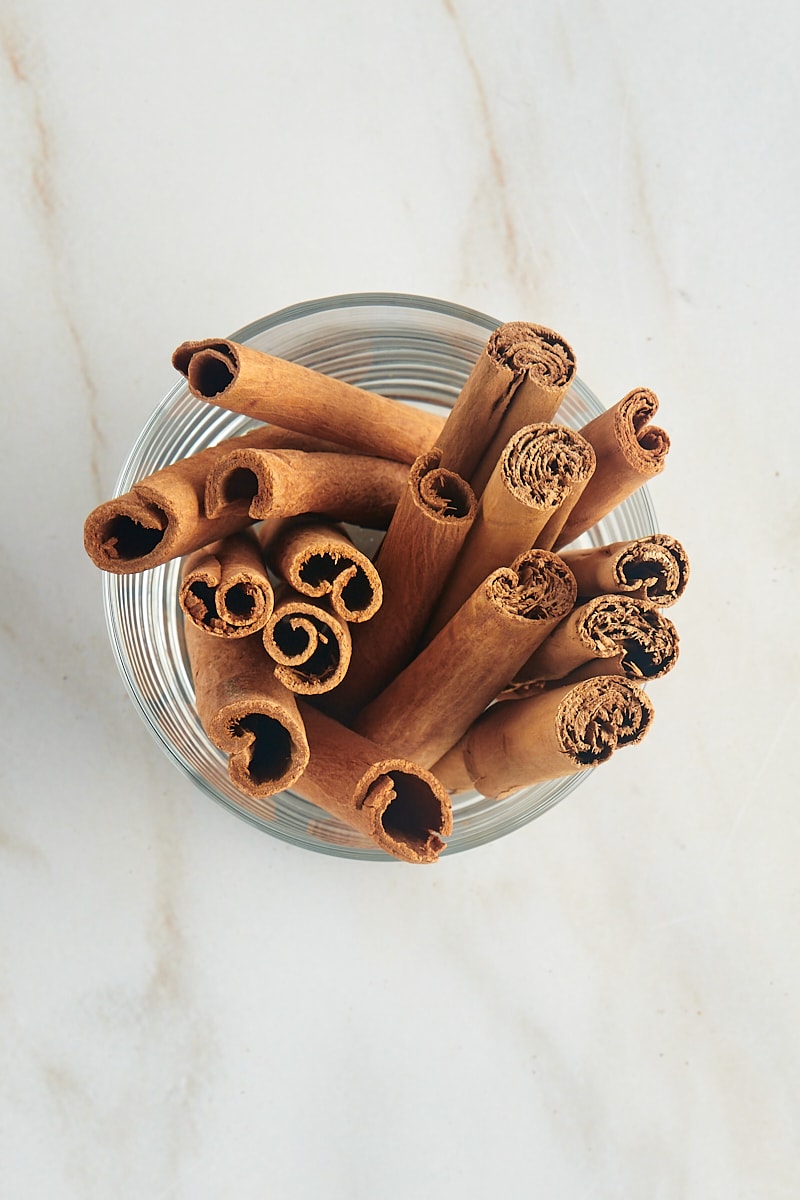
Cinnamon Sticks
Cinnamon sticks are slender, rolled pieces of dried cinnamon bark, known for their aromatic and flavorful qualities. Bakers often use these sticks to infuse dishes with a more subtle and complex cinnamon essence.
They can be added to simmering liquids, such as milk or water, to create cinnamon-infused bases for various recipes. Cinnamon sticks are particularly handy in recipes where you want a milder cinnamon flavor or when you’d like to avoid the texture of ground cinnamon.
How to Grind Cinnamon Sticks
You can grind cinnamon sticks to create your own ground cinnamon for adding to recipes. This is a great way to make fresh cinnamon with no additives. To do this, first break the sticks into smaller pieces, and then place them in a spice grinder (affiliate link) or coffee grinder. Pulse or grind until the cinnamon is a fine to medium grind, depending on your preferences.
If you don’t have a spice grinder, you can use a mortar and pestle (affiliate link), but that will definitely be more labor intensive. A grater (like a Microplane) can work but is less efficient due to the stickiness and fibrous texture of cinnamon sticks. You won’t get the fine, uniform grind you will from a spice grinder.
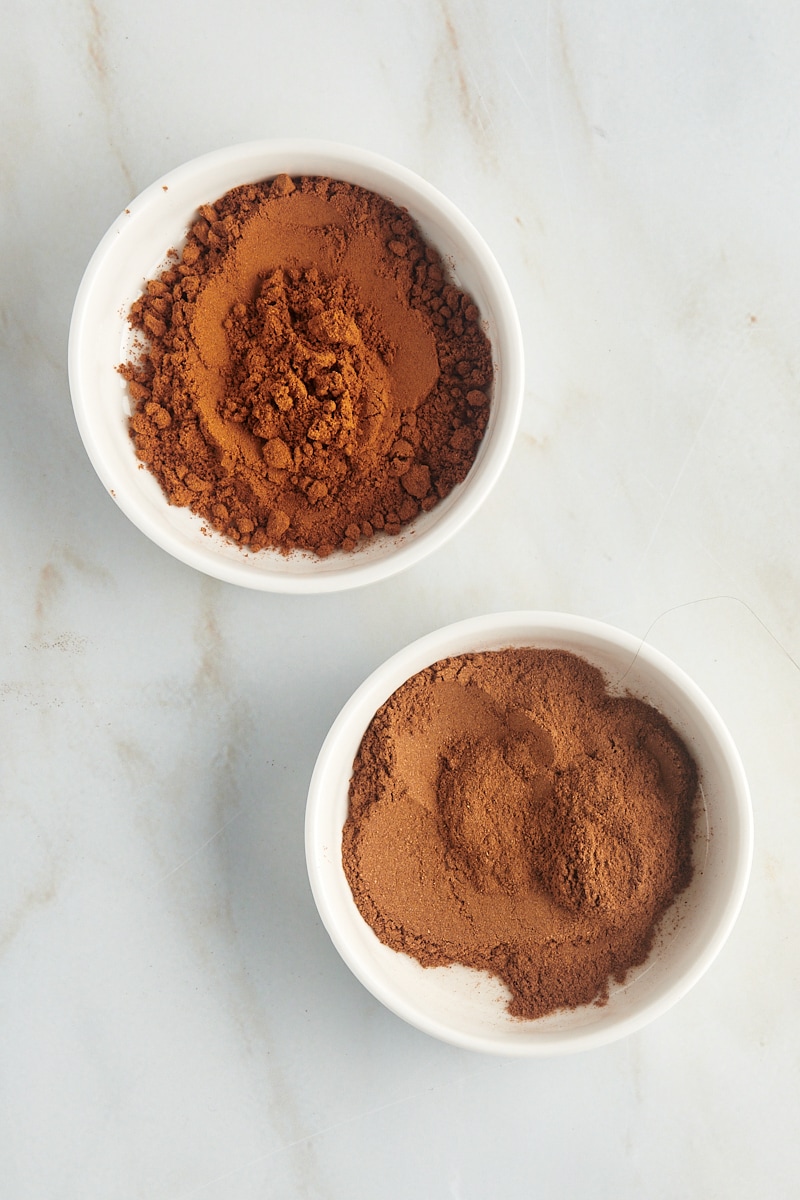
Ground Cinnamon
Ground cinnamon is a finely powdered spice that is derived from cinnamon sticks. It is a common and convenient form of cinnamon readily available in most grocery stores. Unlike with cinnamon sticks, there’s no extra equipment or processing needed to use this form of cinnamon.
Types of Cinnamon
When it comes to baking, there are two main types of cinnamon you can use – cassia cinnamon and Ceylon cinnamon. You may see other names on cinnamon labels, but those are generally subtypes of these two main classifications.
Both types have their unique qualities, so you can choose based on the flavor you prefer for your baking recipes. Let’s take a look at each type of cinnamon and what makes them unique.
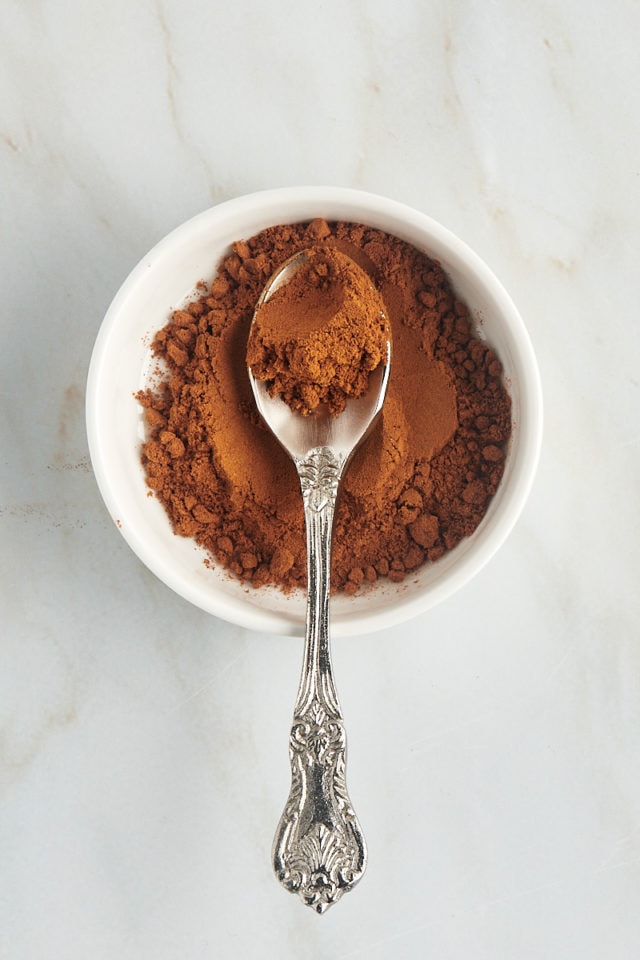

Cassia Cinnamon
This is the most common type you’ll find in most grocery stores. It has a reddish-brown to dark brown color and a strong, sweet flavor that’s perfect for many baking recipes.
Cassia cinnamon sticks are often rough and thick, which can be more challenging to grind into a fine powder.
Use cassia cinnamon when you want a bold and robust cinnamon flavor in your baked goods. It’s ideal for recipes like cinnamon rolls, spiced cakes, and cinnamon streusel toppings where you want the cinnamon to be a prominent flavor.
There are many regional and local variations within the cassia category, each with subtle differences in flavor and aroma. Let’s take a look at some of the more common varieties.
Indonesian Cinnamon and Korintje Cinnamon
Indonesian cassia is a well-known subtype with a strong and bold flavor. Commercial cinnamon products often use this variety for that reason. The Korintje variety, in particular, is famous for its potency.
Chinese Cinnamon
China is a significant producer of cassia cinnamon, and Chinese cassia is one of the most common subtypes. It can vary in flavor and appearance, but it’s generally characterized by its strong, spicy taste.
Saigon Cinnamon (Vietnamese Cinnamon)
Saigon cinnamon is a subtype of cassia known for its intense spiciness and robust flavor. It originates from Vietnam.

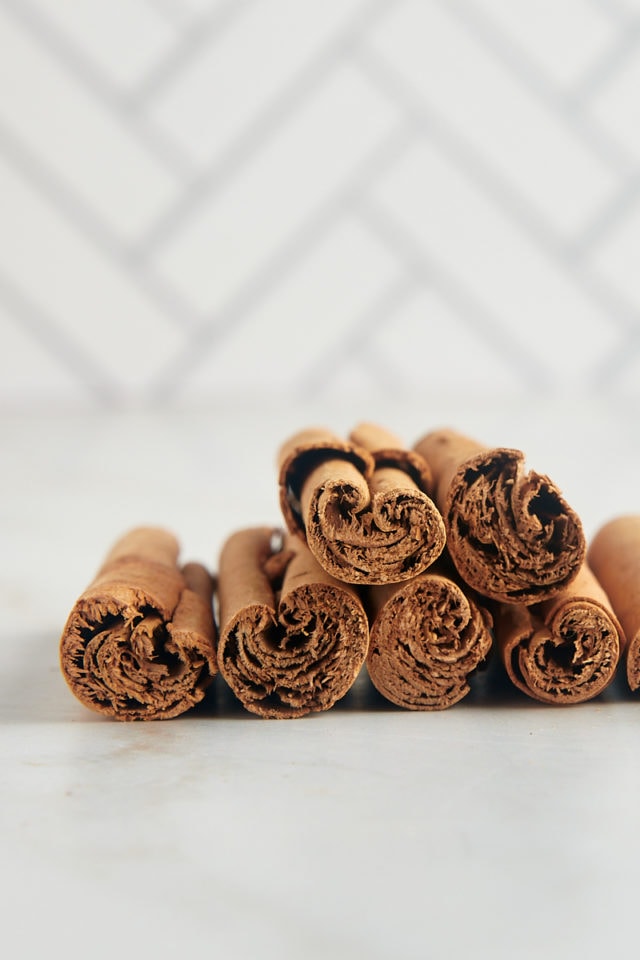
Ceylon Cinnamon
Also known as “true cinnamon”, Ceylon cinnamon has a milder, sweeter taste compared to cassia. It also has a lighter color and may even appear slightly yellowish.
These cinnamon sticks are thinner, softer, and more delicate, making them easier to crumble and grind into a fine powder.
Opt for this type of cinnamon when you want a sweeter, more subtle cinnamon taste. It’s a great choice for recipes like apple pie, sugar cookies, and desserts where you want a gentle hint of cinnamon without it being overpowering. It’s also a good choice when the recipe is more delicate, and you want to avoid a strong cinnamon punch.
What is “True Cinnamon”?
Ceylon cinnamon was historically traded and used in Europe when cinnamon was first introduced to the Western world. It was highly prized for its sweet, delicate flavor and pleasant aroma. The name “true cinnamon” was used to distinguish it from other types of cinnamon like cassia cinnamon, which is bolder and spicier in flavor.
While Ceylon cinnamon doesn’t have as many subtypes as cassia cinnamon, different growing conditions and regions can influence the flavor and aroma of the cinnamon, creating subtle variations in the spice. The key distinction is that all types within this category are generally milder and sweeter than cassia cinnamon varieties.
Sri Lankan Cinnamon
This is the most common and widely recognized type of Ceylon cinnamon and is known for its mild, sweet flavor and light color. Sri Lanka is the largest producer of this kind of cinnamon, and the terms “Sri Lankan cinnamon” and “Ceylon cinnamon” are often used interchangeably. That makes sense, as Sri Lanka was previously called Ceylon!
Seychelles Cinnamon
This subtype of Ceylon cinnamon is grown in the Seychelles Islands. It is often considered to have a distinctive flavor and aroma compared to other varieties.
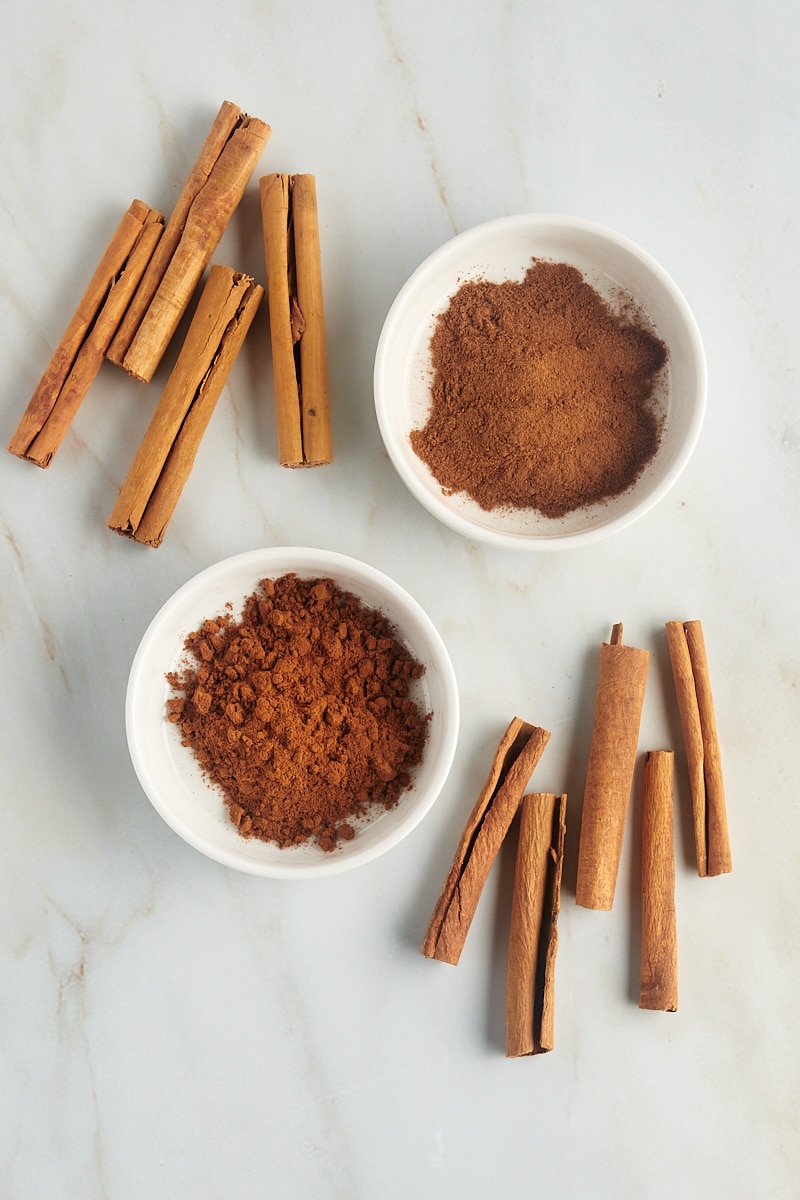
How to Store Cinnamon
Cinnamon is a delicate spice that can lose its flavor and aroma if not stored properly. Here are some tips on how to store cinnamon sticks and ground cinnamon to maintain their freshness:
- Keep in an airtight container. Choose an airtight container that seals well for storing both cinnamon sticks and ground cinnamon. While not a requirement, an opaque container is a good choice.
- Store in a cool, dark, dry place. Keep your cinnamon away from light and heat, as those can degrade the cinnamon over time. Avoiding moisture helps keep it fresh.
- Do not refrigerate. The moisture from the refrigerator can cause cinnamon sticks to become moldy and ground cinnamon to become clumpy.
- Check expiration dates. Ground cinnamon has a longer shelf life than cinnamon sticks, but they will both lose their potency over time.
- Test for freshness. Use your nose! The color and texture can change over time but aren’t as reliable as the scent. Also, some people may find tasting cinnamon sticks too spicy, so it’s often best to rely on the aroma test. Take a small pinch of ground cinnamon and rub it between your fingers. To test a cinnamon stick, gently break it or scratch the surface to release the aroma. If there is a strong, aromatic scent, it’s likely still fresh.
Cinnamon Recipes to Try
Now, put your knowledge of the different types of cinnamon to delicious use with some of these recipes that feature cinnamon! Happy baking!
- Biscuit Cinnamon Rolls
- Cinnamon Sugar Cookie Squares
- Cinnamon Pudding Cake
- Brown Butter Snickerdoodles
- Apple Spice Cake with Cinnamon Cream Cheese Frosting
- Cinnamon Roll Cake
- Cinnamon Swirl Bread
- Classic Crumb Cake
- Cinnamon Bun Scones
- Apple Cinnamon Muffins
More Ingredient Guides
Bake or Break is a participant in the Amazon Services LLC Associates Program, an affiliate advertising program designed to provide a means for us to earn fees by linking to Amazon.com and affiliated sites.

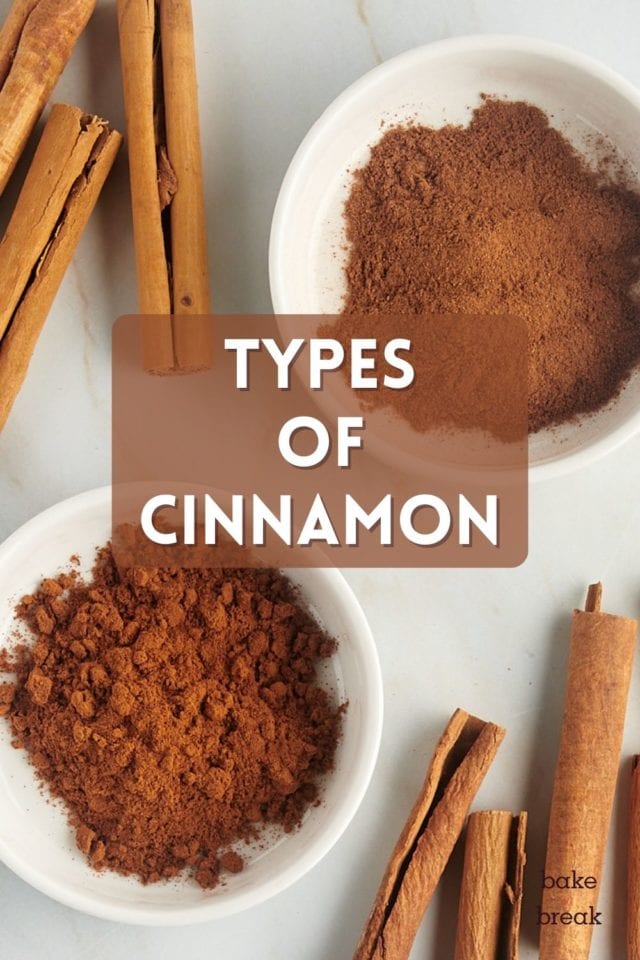




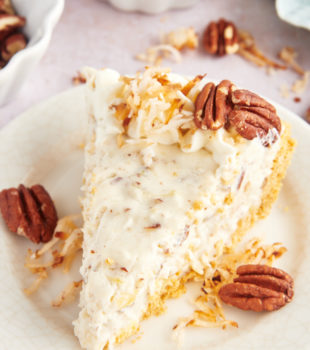
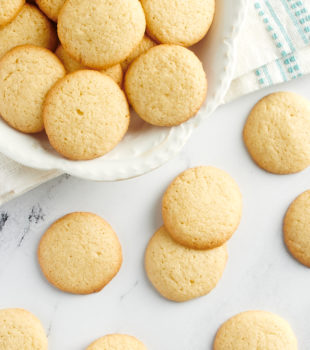
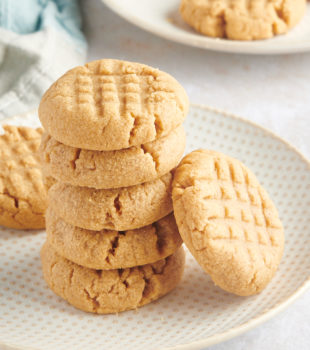


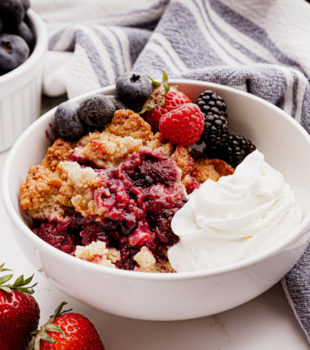
2 Comments on “Types of Cinnamon: A Home Baker’s Guide”
Great article, Jennifer – thank you for the information.
Sheila
My pleasure, Sheila! Happy baking!